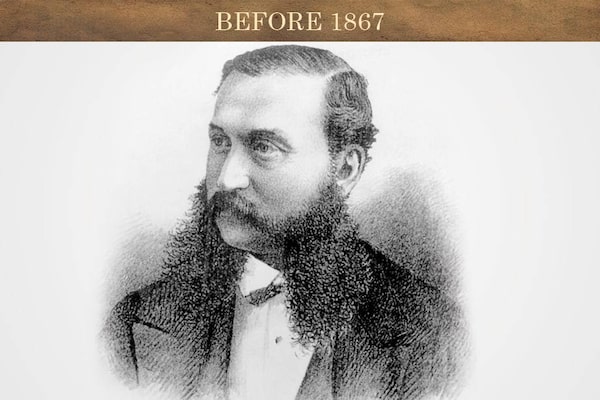
Barnabas Day, the first licensed dentist in Ontario, was passionate about bringing professionalism to the job.
The date of July 2, 1833 may not immediately suggest a historic event, but it happens to be the birth date of the man who changed Ontario dentistry forever.
Born on a farm near Kingston, Ont., Barnabas Day was drawn to medicine in his early 20s. He served as an apprentice with a local dentist before establishing a rudimentary practice of his own. Craving more education and knowledge, Dr. Day later enrolled at Queen's College in Kingston and graduated with a medical degree in 1862. Before long he was being recognized as one of Ontario's most educated and skilled dentists.
Dr. Day was also blessed with political wherewithal and the kind of charisma that allowed him to catch the attention of and befriend high-ranking public figures. Thanks to his firm connections with the political elite of the time, Dr. Day was tipped off that Canada West (now known as Ontario) would be forever altered by the upcoming formation of the Dominion of Canada. He saw before him an atmosphere of great change and possibility, and a major opportunity to address the ongoing problem of untrained, unlicensed and fraudulent dentists that infiltrated cities and towns across the province. Dr. Day was passionate about his profession and about bringing it and Ontarians the dignity they deserved.
It was apparent to Dr. Day that charlatans were destroying dentistry's reputation. These untrained practitioners relied on outrageous advertisements and dubious customs to attract clients, many of whom had little choice but to submit themselves to torturous, unsanitary treatment. Most of Ontario's population was left to the mercy of these hucksters and con artists, and many were understandably terrified by the mere thought of dental treatment.
In 1867, Ontario's population was just over 1.6 million people. The majority of them lived on farms and agriculture was the mainstay of the economy. The industrial revolution had taken hold but most factories were small and located in larger cities and towns like Toronto, Hamilton, Ottawa and Port Hope.
Despite a generally robust economy in the province, the dental health of the population was quite poor, mostly due to the less than desirable mix of charlatan and blacksmith dentists the public had either interacted with personally or heard horrendous tales of through friends, family and neighbours.
Nonetheless, there was a small group of formally trained dentists with the will to make a difference. These men were often physicians with an interest in dentistry, who had studied in dental schools in the United States or had served an apprenticeship with an experienced dentist.
With the arrival of dental technology breakthroughs like the invention of vulcanite rubber, which could be used to make dentures, Dr. Day was inspired to reach out to reliable members of Ontario's dental profession to meet with him in Toronto to form a professional organization.
While it's unclear how many dentists were working in Ontario in January, 1867, when Dr. Day arrived in Toronto, just eight dentists were waiting for him at the Queen's Hotel. Even with this small turnout, Dr. Day's initiative was successful at catching the attention of quality dentists in Ontario and those unable to attend this first meeting sent letters of support for the formation of the organization. Small turnout or not, it was at this meeting that the Ontario Dental Association was formed and would go on to create a law that would, among other things, require dentists to pass an exam to achieve official certification.
Word soon spread of the new dental organization, and by July 1867, 31 dentists had joined the cause. Soon after that, a draft of an ODA Constitution and Bylaws was approved, codifying the association's commitment to shared knowledge and professional development.
The primary purpose of forming the Ontario Dental Association was to put organized pressure on the provincial government to create legislation that would outlaw the harmful, grotesque and carnival-like attributes of what was passing as dentistry for far too long. It was the actions of the ODA that quickly resulted in An Act Respecting Dentistry being passed in the Ontario legislature in 1868 and that same year, the formation of the self-governing body of the Royal College of Dental Surgeons of Ontario (RCDSO), which still exists to this day.
Dr. Day was the first dentist to be admitted formally to the profession in Ontario. He practiced for a few more years in the province before moving to Los Angeles in 1897, where he practised dentistry and grew walnuts, olives and fruit. He died in 1907.
This content was produced by the Ontario Dental Association. The Globe and Mail was not involved in its creation.